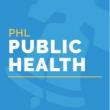
Hepatitis infections are at high rates in Philadelphia, according to a new report that sheds light on incidence rates in different neighborhoods. Since 2021, an estimated total of 77,273 Philadelphia residents have been diagnosed with either chronic hepatitis B or hepatitis C – with hepatitis C seeing a higher prevalence.
This data is summarized in the new annual public health report, released by the city’s Department of Public Health Division of Disease Control. The report found hepatitis is prevalent in almost every Philadelphia county zip code.
The department estimates that 52,640 residents are living with chronic hepatitis C, while only 1.5% of residents (24,633) are believed to be diagnosed with chronic hepatitis B. The report also shows that 164 deaths among city residents were caused by chronic hepatitis B and hepatitis C.
There have been 1,620 newly reported chronic hepatitis B and hepatitis C cases over the last two years, despite new infections steadily declining since 2013.
Danica Kuncio, viral hepatitis program manager at the city’s Department of Public Health, said that the number of Philadelphians living with chronic hepatitis B and hepatitis C is “profound.”
Kuncio also said that the city has not fully accounted for unreported hepatitis cases, which if confirmed, could mean the actual numbers are even higher.
“Over the past decade, we’ve seen more than 50,000 people testing positive,” said Danica Kuncio, viral hepatitis program manager at the city’s Department of Public Health. “And these are just the individuals who’ve been tested.”
Hepatitis B and hepatitis C transmission occurs through direct contact with blood or other bodily fluids of a person who is infected. Its main symptom causes inflammation and eventually severe damage to the liver, which can cause fibrosis, cirrhosis, liver cancer, or even death.
Both viruses can be spread through sexual contact or sharing of a syringe needle. Hepatitis can also be transmitted from mother to baby at birth. The Centers for Disease Control and Prevention (CDC) recommends that infants receive the hepatitis B vaccine at 6-18 months of age.
Data from the Centers for Disease Control and Prevention shows that people infected with hepatitis B report feeling sick for only a few weeks, which is also known as an “acute” infection.
And Kuncio said that it’s common for individuals with the infection to be asymptomatic, which leads to high numbers of unreported cases. She also said that testing always remains low.
“We know there’s many people who don’t show symptoms and remain untested,” she said. “There’s a lot of people living with these diseases in the city and they need our support. There’s a lot of activities we can do to prevent new infections as well as support those who are already living with chronic hepatitis B and chronic hepatitis C.”
The Department of Public Health’s report also shows that there are wide racial disparities of individuals infected. Out of newly reported cases, 61% of chronic hepatitis B cases were among Asian and Black communities in Philadelphia.
Kuncio said that a number of factors could point to higher transmission rates between non-Hispanic, Black, and Hispanic individuals.
“One – social determinants of health,” she said. “We see a lot of conditions for the residents of Philadelphia and nationally, and similar drivers, especially in the case of hepatitis B.”
The Department of Public Health’s report also coincides with Hepatitis Awareness Month in May.
In a statement, Landrus Burress, director for the Division of Disease Control said, “the tools exist to prevent and treat hepatitis B and C, but barriers to those resources affect how Philadelphia residents access and utilize these resources.”
“This report provides data that highlights,” Burress said, “there are many people in the city who need support to reduce the inequities in access to vaccination, screening, treatment, and cure.”
From WHYY






